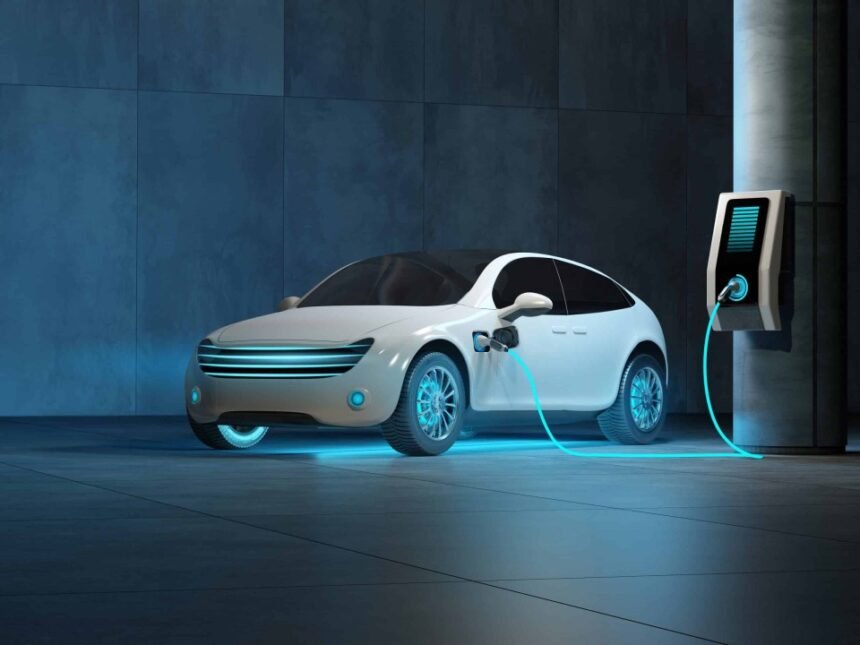The future of electric vehicles (EVs) has never been more promising. With advancements in green technology, a surge in consumer demand, and governments worldwide pushing for more sustainable solutions, 2024 stands out as a pivotal year for the electric vehicle market. As we move towards a cleaner and more sustainable world, EV trends are shaping not only how we drive but also how we perceive transportation itself.
The Growth of Electric Vehicles in 2024
In 2024, electric vehicles are no longer just a niche product for eco-conscious consumers. They are becoming mainstream, with automakers ramping up production to meet growing demand. Future cars are all about reducing carbon footprints while providing efficient and enjoyable driving experiences.
Governments and regulatory bodies worldwide are setting ambitious targets to reduce emissions. Many have introduced incentives to encourage the adoption of electric vehicles, including tax breaks, subsidies, and rebates. These policies are driving automakers to develop a broader range of EV models that cater to different segments of the population, from affordable options for everyday consumers to high-performance electric sports cars.
Key EV Trends in 2024
Several exciting EV trends are emerging in 2024, pointing towards a future where sustainable transport becomes the norm. Here are some of the top trends shaping the electric vehicle landscape this year:
1. Longer Battery Range and Faster Charging
One of the biggest challenges for electric vehicles has been battery range and charging infrastructure. In 2024, advances in battery technology have led to EVs with much longer ranges on a single charge. Some models can now travel over 400 miles before needing a recharge, making electric vehicles more practical for long-distance travel.
Additionally, fast-charging stations are becoming more widespread, and charging times have been reduced dramatically. New technologies, like solid-state batteries, promise even faster charging and greater energy efficiency, reducing the anxiety many drivers face about running out of power.
2. Affordable EVs for the Mass Market
As demand grows, automakers are working to produce more affordable electric vehicles. In 2024, we are seeing the introduction of low-cost EV models aimed at the mass market, making sustainable transport accessible to a wider audience. This shift is essential as governments push for the phasing out of gasoline-powered cars, aiming for a future where green technology dominates the roads.
With increased competition in the EV market, prices are expected to drop further as production scales up, making electric vehicles more affordable than ever.
3. Autonomous Driving
The future of electric vehicles goes beyond just going green; it also involves smart driving technologies. Autonomous driving technology is evolving rapidly in 2024, with several companies testing self-driving EVs. These vehicles use advanced sensors, AI, and machine learning to navigate roads with little to no human input.
While fully autonomous cars may not be widespread this year, there’s a significant push toward integrating more autonomous features, such as autopilot modes for highway driving and self-parking capabilities. These advancements are making future cars not only greener but also smarter and safer.
4. Integration with Renewable Energy
One of the most exciting EV trends in 2024 is the increased integration of electric vehicles with renewable energy sources. Solar panels on the roofs of electric vehicles are no longer a far-off dream. Some automakers have introduced models with integrated solar charging, allowing vehicles to partially recharge while parked or driving in sunny conditions.
Moreover, many electric vehicle owners are installing home charging stations powered by renewable energy sources like solar or wind power. This approach not only reduces dependence on the grid but also enhances the sustainability of EVs, truly embodying the concept of green technology.
Challenges for Electric Vehicles in 2024
While the future looks bright, the widespread adoption of electric vehicles in 2024 still faces several challenges:
1. Charging Infrastructure
Despite the growth in charging stations, many regions still lack sufficient infrastructure. Rural areas and smaller towns may struggle to keep up with the demand for fast chargers. Governments and private companies are working to fill this gap, but it remains an issue for many prospective EV buyers.
2. Battery Disposal and Recycling
As more electric vehicles hit the road, the issue of battery disposal and recycling becomes critical. EV batteries, while long-lasting, will eventually need replacement. Managing the disposal and recycling of these batteries in an environmentally friendly way is a challenge that the industry must address to ensure the sustainability of EVs.
3. Raw Materials for Batteries
Another concern is the sourcing of raw materials, such as lithium, cobalt, and nickel, needed for EV batteries. The mining of these materials can have environmental and ethical implications, particularly in developing countries. To overcome this, many companies are researching alternative battery technologies that rely on more sustainable and abundant materials.
The Role of Governments in EV Adoption
Governments worldwide are playing a crucial role in accelerating the adoption of electric vehicles. In 2024, several countries are implementing stricter emissions standards, making it harder for gasoline and diesel-powered vehicles to remain in the market.
Many governments also invest in green technology, incentivizing individuals and businesses to switch to electric vehicles. For instance, some countries provide rebates for the purchase of EVs, while others are offering grants to build charging infrastructure.
What Does the Future Hold for Electric Vehicles?
Looking beyond 2024, the future of electric vehicles seems even more transformative. We will likely see breakthroughs in battery technology, making EVs even more energy-efficient and affordable. The integration of autonomous driving features will also progress, potentially revolutionizing how we commute and travel.
Sustainable transport will continue to evolve, with electric vehicles leading the way. As more consumers make the switch to EVs, cities may also see changes in how infrastructure is designed, with more charging stations, fewer gas stations, and streets filled with future cars that are quieter and cleaner.
In conclusion, the future of electric vehicles in 2024 is defined by innovation, sustainability, and accessibility. As we embrace green technology, the shift to sustainable transport will shape the way we move, ensuring a cleaner and greener future for generations to come.





